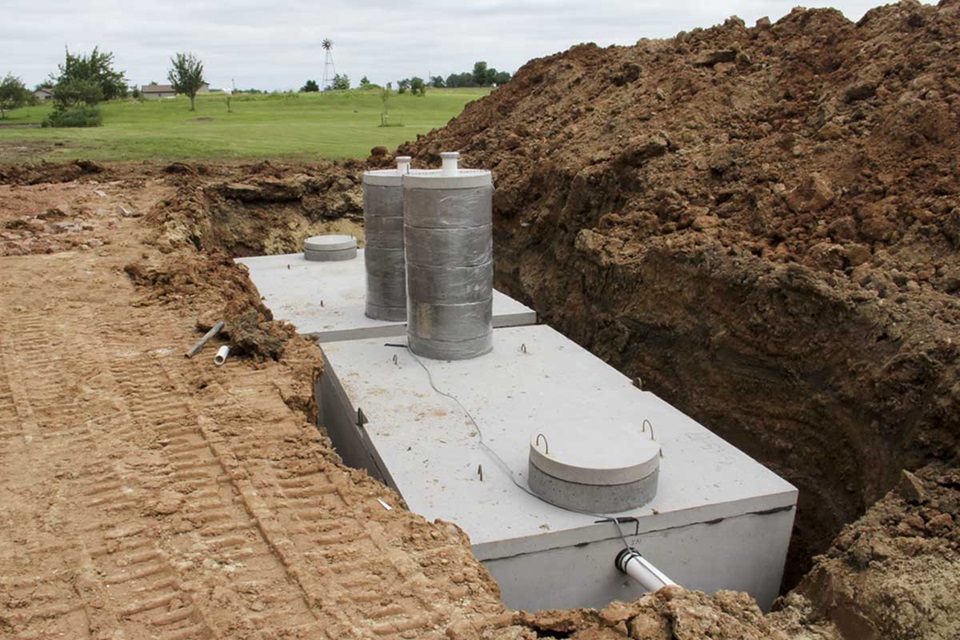Choosing the right wastewater treatment system is a critical decision for homeowners, property developers, and small business operators. The system you install will affect not only how wastewater is treated and managed, but also how the overall site is designed, used, and maintained over time. If you are currently deciding between a traditional septic tank and an awts septic system, understanding the practical differences can assist in selecting the most suitable solution for your needs.
How an AWTS septic system works
An awts septic system (Aerated Wastewater Treatment System) is a multi-stage solution designed to treat household sewage and greywater to a much higher standard than conventional septic tanks. The process begins with a primary chamber where solids settle. From there, the liquid moves to an aeration chamber where air is pumped in to encourage the growth of aerobic bacteria that break down organic matter. The water then passes through a clarification zone to remove remaining solids and is finally disinfected—usually with chlorine—before being discharged, most often via surface or subsurface irrigation.
This staged treatment significantly reduces odour and contamination risks. Systems such as the S2500, for example, are constructed from concrete for durability, are compact in design, and can be scaled up by connecting additional modules as required. These systems are particularly useful on properties where water reuse is a priority or where land conditions demand a higher level of treatment.
How a standard septic tank operates
Traditional septic tanks are based on a much simpler model. Wastewater enters a single chamber where solids settle at the bottom and lighter materials float to the top. The partially treated liquid then flows to a subsurface disposal area, such as a soakage trench or drainage field, where it filters through the soil.
There is no aeration, active biological treatment, or disinfection process in place. As a result, the effectiveness of a septic tank depends heavily on soil conditions and consistent usage. In areas with poor drainage, clay-based soils, or high water tables, these systems can struggle to operate effectively. Over time, especially after periods of heavy rainfall or sustained use, the disposal field may become saturated or fail altogether.
Maintenance and servicing requirements
One of the key distinctions between the two systems is their ongoing maintenance needs. An awts septic system requires routine servicing, typically on a quarterly basis, by a licensed technician. This maintenance includes inspecting aerators, pumps, alarms, and chlorine supply, and is often a condition of council approval. While this represents a greater maintenance commitment, it ensures the system continues to perform efficiently and safely.
Conversely, standard septic tanks do not require scheduled servicing. However, this can give a false impression of simplicity. Issues with the disposal field, such as blockages or saturation, may go unnoticed until significant repairs are needed—often involving pipe replacement, system relocation, or costly landscaping.
Treated water quality and irrigation potential
One of the major advantages of an awts septic system is the quality of its treated water. The final effluent, having been clarified and disinfected, is suitable for controlled irrigation through subsurface or spray systems. This makes it possible to reuse treated water on lawns, trees, and gardens—especially valuable on rural properties or areas without access to mains water.
Traditional septic systems do not provide water suitable for surface irrigation. The effluent still contains pathogens and solids, which limits its disposal options and can raise health or environmental concerns. In areas with tighter regulatory requirements, this limitation may affect your ability to obtain approval or expand your system in the future.
Flexibility for future changes
Another consideration is scalability. Standard septic systems are typically designed for a set daily load. If you extend your home, add a secondary dwelling, or increase occupancy levels, the original tank may no longer be adequate. Retrofitting or replacing the system may be necessary.
In contrast, awts septic systems like the S2500 offer greater flexibility. Additional modules can be added to handle increased wastewater volumes. This makes them a more future-ready option, especially for households or properties anticipating changes in use. Furthermore, AWTS systems are often more likely to meet changing council requirements, which are increasingly focused on environmental protection and sustainable water use.
Seeking professional advice
Selecting a wastewater system is not simply a matter of preference—it must align with the site’s physical conditions, future plans for development, and local council regulations. An awts septic system typically involves a higher initial investment and greater maintenance, but it also provides superior water quality, increased flexibility, and longer-term value.
Before proceeding, consult a licensed wastewater system installer who can assess your property, soil profile, water usage, and regulatory obligations. A well-matched system will protect your property, support healthy landscaping, and help you remain compliant as environmental standards evolve.
